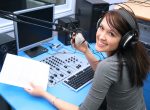Has your doctor told you that you need a nasendoscopy? This word isn’t as frightening as it sounds. In fact, it describes a fairly simple procedure that’s used to assess the health of your nose, throat, and larynx.
Before having this procedure, you need to understand what the procedure is and why you need it. And secondly, you need to make sure that the right person is performing the procedure, so that you get the best results from it.
With those two facts in mind, let’s take a look at the nasendoscopy procedure.
What is a Nasendoscopy?
A nasendoscopy is a procedure that examines the inside of your nose, your voice box, and your throat. It’s usually performed using an endoscope, which is a thin tube that’s used to view internal organs.
There are two types of endoscope tubes, rigid and flexible. The tubes used for most nasendoscopy procedures are thin and flexible, which makes them easy to manoeuvre in the tight spaces. Rigid tubes can be used but generally aren’t as common. Although you can still make sounds, it is difficult to make connected speech when a rigid scope is used.
During the test, the endoscope is passed through the nose into the space behind it and can then be moved to different depths. The endoscope used for these procedures contains a light and a tiny video camera, which allows a close-up view of the tissues and structures inside your body. There’s also a side channel in the endoscope, through which the operator can pass instruments to take a biopsy of any suspicious tissue.
There are several different terms used to describe procedures that can be performed in this way including:
- Nasendoscopy, an all-in-one procedure that can examine the insides of the nose, throat, and voice box
- Laryngoscopy, specifically examines your voice box and vocal cords
- Stroboscopy, where the camera is fitted with a strobe light and examines your vocal folds when you’re making sounds (also called videostroboscopy)

What is a Stroboscopy?
If you have issues with your voice box, then your doctor may recommend a stroboscopy. This is a type of nasendoscopy, using a flexible endoscopy tube to examine your vocal folds, but it’s performed a little differently.
During a stroboscopy, your vocal folds are examined while they’re producing sounds. In addition to this, a microphone is placed along the neck to detect the frequency of the vibrations in the vocal folds and a strobe light is combined with the endoscopy itself. The strobe light flashes on and off as the vocal folds vibrate, allowing for a more detailed examination of the vibrations and easier identification of abnormalities.
This procedure is a more accurate way, and the preferred option, for examining the vocal folds and pickig up abnormalities. Providing your speech pathologist with video footage of this procedure allows them to gain a deeper understanding of any disorder that may be present, and allows them to identify how it relates to other symptoms and how it affects vocal function.
When a Nasendoscopy is needed
Your doctor may send you for a flexible nasendoscopy if you have ongoing symptoms in your nose or throat that aren’t relieved by other treatments. Your doctor will use this test to assess conditions like:
- Nasal growths
- Recurrent nosebleeds
- Speaking problems
- Suspected growths of the throat, nose, or voice box
- Swallowing problems
- Chronic sinusitis
- A foreign body in the throat or nose
- Breathing problems during sleep
- Unexplained breathing problems (like VCD) or reflux

What to expect during a Nasendoscopy
A nasendoscopy is a routine procedure that’s usually performed in a hospital clinic and doesn’t require a hospital stay. A local anaesthetic is used to numb the nose, so you will be awake throughout the procedure. However, if you have a child who’s undergoing the procedure, then it’s usually done under general anaesthetic so that they’re asleep throughout.
For adults, you’ll need to sit up during the procedure as the throat scope is pushed into your nose once the anaesthetic starts working. The operator then moves the endoscope around to examine the relevant parts.
During your procedure, the operator may ask you to perform certain movements or make sounds. This is why a flexible tube is usually used for this procedure, so you can still talk or sing during it. Some of the actions you may have to perform are:
- Talking
- Swallowing coloured water
- Puffing your cheeks
- Poking out your tongue
- Making certain sounds
The operator may also take small samples of the inside lining of your nose or throat. This isn’t painful and is done to test the tissues more closely. Once the procedure is complete, the operator will pull out the endoscope.
The entire procedure usually takes around five minutes and can be uncomfortable but shouldn’t hurt. Afterwards, you can go home. If you had the numbing spray then your throat may feel numb for about an hour, and you shouldn’t eat or drink until that passes.

Nasendoscopy Side Effects
Most people who have a nasendoscopy don’t experience any side effects. However, a small number of people do experience mild side effects such as:
- Soreness in the nose or throat
- Sneezing during the procedure which stops once it’s done
- Slight bleeding, which usually stops very quickly
What does a Nasendoscopy cost?
The cost of a nasendoscopy can vary widely depending on which procedure you need and your physical condition. If you’re concerned, talk to your doctor about different payment options.
Laryngologist or ENT: The Best Choice
An Ear, Nose, and Throat (ENT) doctor specialises in disorders of the head and neck region and regularly performs nasendoscopy procedures. A laryngologist is an ENT specialist who focuses solely on the larynx. This is an essential difference when you’re considering who should perform your nasendoscopy.
If you have an issue with your voice, your vocal folds, or your larynx, then it’s best to see an ENT who specialises in the larynx, before undergoing any voice therapy. They will understand how the different parts interact and influence each other and will be able perform the right tests for you to get an accurate diagnosis. Seth Cohen noted that “unless a videolaryngostroboscopy is performed there is a 50% chance that the diagnosis in incomplete or incorrect” (Cohen et al., 2015). It is important that your ENT performs a stroboscopy and provides video footage of the procedure to your speech pathologist to ensure a complete and correct diagnosis.
This might seem as if it will cost you a lot of time and money, but over the long term, getting the right diagnosis can save you from wasting time and money on therapies and treatments that aren’t right for your condition.
Final Thoughts: Getting the right Diagnosis with a Nasendoscopy
A nasendoscopy might seem like it would be frightening or painful, but in reality, it’s five minutes of your time that could make a big difference in assessing the health of your larynx. By visiting your trusted ENT, you can be sure to get the right diagnosis so that your voice therapy is tailored to your needs. This will help you avoid side effects from doing the wrong therapy and ensure that you get the results you want.
If you’re concerned about your larynx or voice and need help, then talk to our team about optimising your voice today.
References
Cohen, S. et al. (2015). Change in Diagnosis and Treatment Following Specialty Voice Evaluation: A National Database Analysis. Laryngoscope, 125:1660-1666.
Caring for your voice
There are some healthy voice habits that can be done everday to help maintain and protect your voice.



